Ibn Battuta was no ordinary traveller. Between 1325 CE when he set off and 1354 CE when he finally returned home to stay, he had visited about 40 modern countries and travelled roughly 75,000 miles, going on foot, camel, horse, wagon, boat and even sled.
Morocco
Materials from Morocco
Mirage

In a world dominated by the brutal Vathek empire, eighteen-year-old Amani is a dreamer. She dreams of what life was like before the occupation; she dreams of writing poetry like the old-world poems she adores; she dreams of receiving a sign from Dihya that one day, she, too, will have adventure, and travel beyond her isolated home. But when adventure comes for Amani, it is not what she expects: she is kidnapped by the regime and taken in secret to the royal palace, where she discovers that she is nearly identical to the cruel half-Vathek Princess Maram. The princess is so hated by her conquered people that she requires a body double, someone to appear in public as Maram, ready to die in her place. As Amani is forced into her new role, she can’t help but enjoy the palace’s beauty―and her time with the princess’ fiancé, Idris. But the glitter of the royal court belies a world of violence and fear. If Amani ever wishes to see her family again, she must play the princess to perfection…because one wrong move could lead to her death.
The Amazing Travels of Ibn Battuta
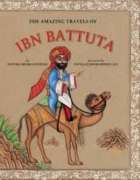
In 1325, when Ibn Battuta was just 21, he bid farewell to his parents in Tangier, Morocco, and embarked on a pilgrimage to Mecca. It was 30 years before he returned home, having seen much of the world. In this book he recalls his amazing journey and the fascinating people, cultures, and places he encountered. He traveled extensively, throughout Islamic lands and beyond — from the Middle East to Africa to Europe to Asia. Ibn Battuta kept a diary of his travels, and even though he lost it many times and had to recall and rewrite what he had seen, he kept a remarkable record of his years away. His meticulous observations, retold here by Fatima Sharafeddine and beautifully illustrated by Intelaq Mohammed Ali, give us a remarkable picture of what it was like to be a traveler nearly 700 years ago.
My Father’s Shop
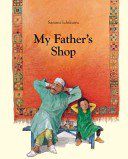
Despite his father’s wishes, a Moroccan carpet seller’s son doesn’t want to learn foreign languages, but when trying to make a rooster crow in a crowded, tourist-filled market, he inadvertently learns how roosters crow in many countries.
The Scorpions of Zahir
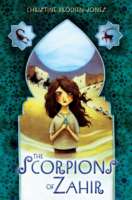
Zagora Pym has always wanted to be a desert explorer. Her father, Charlie Pym, is exactly that, and she’s always loved to look over his maps of far away exotic places. One day she’d be trekking through the deserts of Africa and China, discovering hidden treasures from lost tribes. But Zagora would never have guessed that her chance to prove herself would come so soon. Like most adventures, it starts with a mysterious letter. The question is, how will this adventure end?
Zagora’s dreams of desert exploration are about to come ture, but are she and her father and brother being followed? And will they ever make it back to civilization?
Kassim’s Shoes
Kassim succumbs to pressure to abandon his old shoes but has trouble discarding them.
To Timbuktu
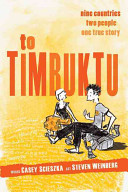
Casey and Steven met in Morocco, moved to China, then went all the way to Timbuktu. This illustrated travel memoir tells the story of their first two years out of college spent teaching English, making friends across language barriers, researching, painting, and learning to be themselves wherever they are.
Ali, Child of the Desert
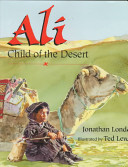
On a trip to the Moroccan market town of Rissani, Ali becomes separated from his father during a sandstorm.
King Of The Wind: The Story Of The Godolphin Arabian
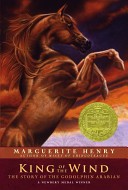
He was named “Sham” for the sun, this golden-red stallion born in the Sultan of Morocco’s stone stables. Upon his heel was a small white spot, the symbol of speed. But on his chest was the symbol of misfortune. Although he was swift as the desert winds, Sham’s pedigree would be scorned all his life by cruel masters and owners.
This is the classic story of Sham and his friend, the stable boy Agba. their adventures take them from the sands of the Sahara. to the royal courts of France, and finally to the green pastures and stately homes of England. For Sham was the renowned Godolphin Arabian, whose blood flows through the veins of almost very superior thoroughbred. Sham’s speed — like his story — has become legendary.
Come and Play: Children of Our World Having Fun
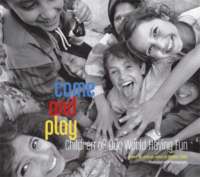
Come and Play features 32 photographs of children from everywhere. China, Japan, Greece, Wales, Morocco, Oman, Texas, New York, and many more. Each photo is beautiful, thought provoking, and accompanied by lines of children’s poetry that will amuse young readers, and cause adult readers to reflect and laugh as they see the images through children’s eyes. The photographs span the last fifty years; while the children who wrote about them are a diverse group between the ages of 5 and 11.
